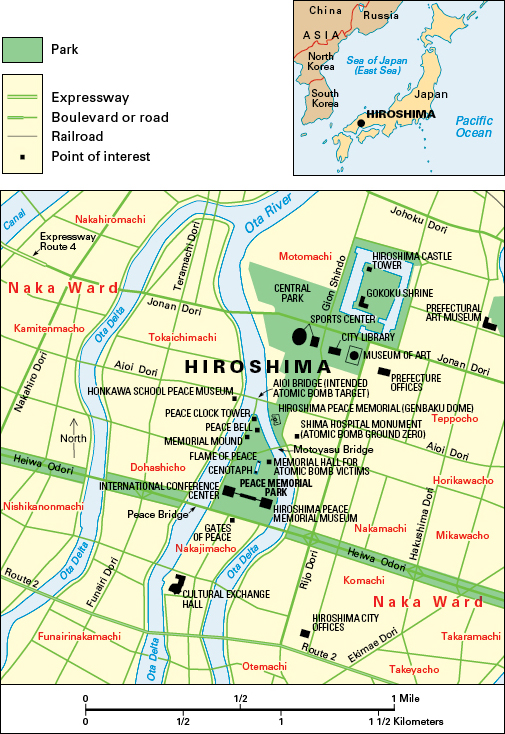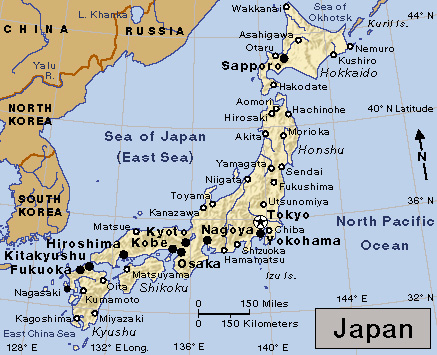Hiroshima << `heer` oh SHEE muh or hih ROH shih muh >> (pop. 1,200,754) is the Japanese city on which the first atomic bomb used in warfare was dropped. It lies on islands formed by a river delta on the shore of the Inland Sea, in western Honshu.

Hiroshima was originally a fishing village, but it developed dramatically between 1600 and 1868 as a castle town of the Asano family. By the late 1600’s, it had become one of Japan’s largest cities. It served as a seat of local government, and as a trade center and a port of internal navigation. Its prosperity and population increased in the late 1800’s and early 1900’s with its industrial growth. By the late 1930’s, Hiroshima was an important military center.

During World War II, on Aug. 6, 1945, a United States Army plane dropped a single atomic bomb on the center of the city. Three days later, the Allies dropped a second atomic bomb on the city of Nagasaki. Japan surrendered to the Allied forces on Sept. 2, 1945. The atomic bomb destroyed about 5 square miles (13 square kilometers) of Hiroshima. Between 70,000 and 100,000 people are estimated to have been killed by the bomb. Other people died later from the effects of atomic radiation.
Hiroshima was rebuilt after the war. The city has developed major automobile, machinery, and shipbuilding industries, and it has regained its prewar population and importance. The Peace Memorial Park was built where the bomb exploded. A service is held there each year on the anniversary of the bombing, in memory of the victims. The Hiroshima Peace Memorial, also known as the Atomic Bomb Dome, is a building that was left unreconstructed after the war and has become a symbol of the peace movement. In 1996, the United Nations Educational, Scientific and Cultural Organization (UNESCO) declared the location a World Heritage Site. UNESCO considers such sites to be areas of unique natural or cultural importance.
